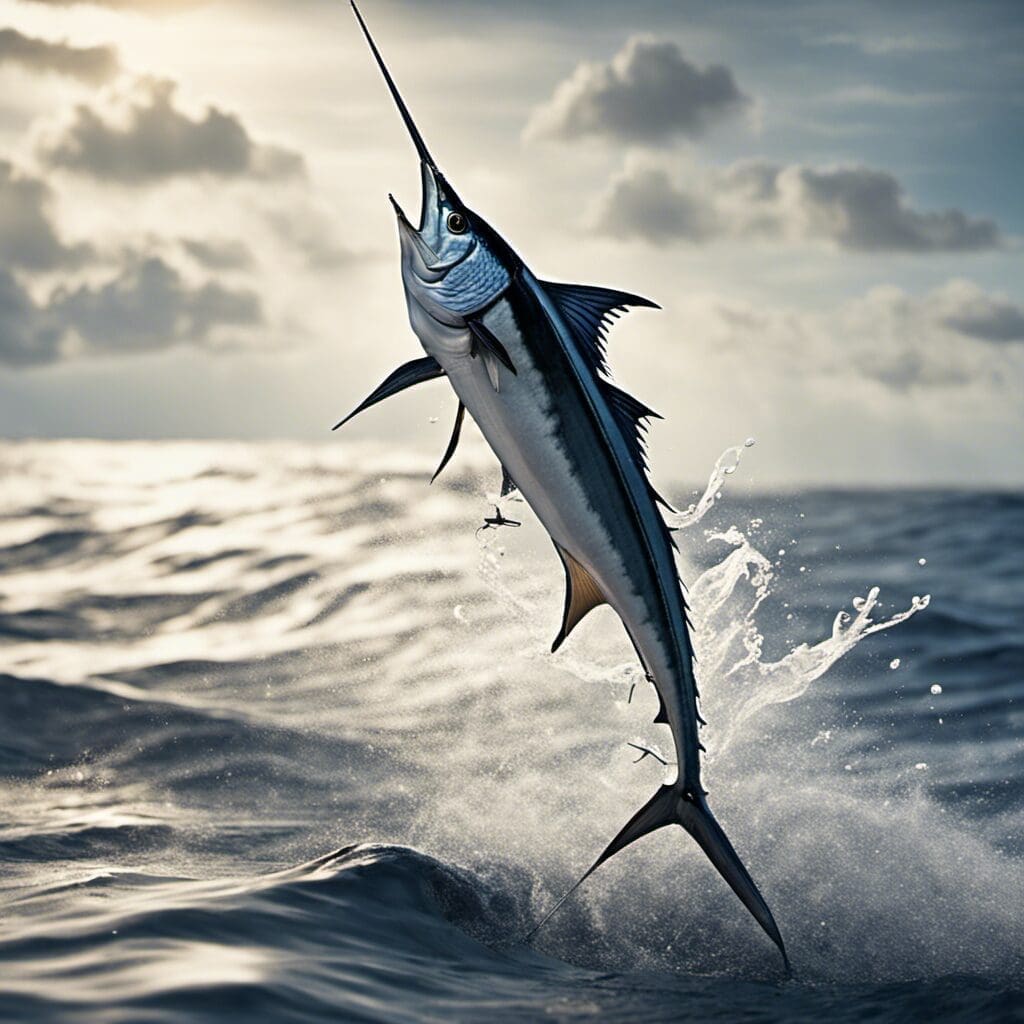Introduction
The White Marlin (Kajikia albidus) is a fascinating marine fish part of the Istiophoridae family, notably known for its majestic appearance and sport fishing popularity.
Conservation Status
The White Marlin is listed as vulnerable by the International Union for Conservation of Nature (IUCN). There have been increased efforts to reduce overfishing and implement stronger protection measures. These include catch limits, reducing bycatch, and promoting the release of live marlins caught in sport fishing.
Statistics
| Stat | Average | Range |
|---|---|---|
| Length | 110 inches | 60-140 inches |
| Weight | 80 lbs | 30-180 lbs |
| Lifespan | 20 years | 12-27 years |
Distribution
The White Marlin has a widespread distribution from the Atlantic and Caribbean to off the coast of Brazil. This species migrates seasonally, heading towards cooler waters during the summer and returning to warmer tropical waters in the winter.
Habitats
White Marlin thrives in warm and temperate saltwater environments. These fish prefer a depth range between the surface and about 200 meters. They gravitate towards waters that range in temperature from 22 to 28 degrees Celsius.
When and Where to See
White Marlin are more likely to be spotted during the summer and fall months, typically during warm, sunny days. They tend to stay near the water’s surface, making them more visible during midday hours.
Best Fishing Locations
Some of the most lucrative locales to fish for White Marlin include:
- Virginia Beach, USA
- Cape Hatteras, USA
- Florida Keys, USA
- Cozumel, Mexico
- Panama City, Panama
- Cabo San Lucas, Mexico
- Santo Domingo, Dominican Republic
- Bermuda, United Kingdom
- Madeira, Portugal
- Quepos, Costa Rica
How to Catch
The best time to catch a White Marlin is during late summer and early fall. Anglers often use live baits, such as mackerel or squid, and popular techniques include trolling and deep-sea fishing.
Identification Guide
White Marlins are identified by their elongated body, a pointed bill, and a dorsal fin that extends down their back. They are generally a brilliant silver-white, but their dorsal and pectoral fins can have a bluish tint.
Culinary
While some choose to eat White Marlin, it is often frowned upon due to their conservation status. If cooked, they have a firm, meaty texture with a mild flavor. Nutritional information shows they are a source of lean protein.
Additional Information
White Marlins ribbon-like dorsal fin assists in corralling and stunning fish— their primary food source. Predators include larger fish species and humans. Historically, they have cultural significance as a prized catch and trophy species among sportfishers.
References and Further Reading
For more detailed information, consult the following sources: FishBase, The Billfish Foundation, and Florida Museum.

